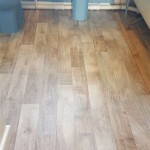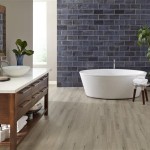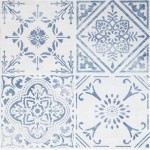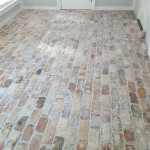Neutral Peel and Stick Floor Tile: A Comprehensive Guide
Neutral peel and stick floor tiles offer a versatile and accessible flooring solution for a wide range of spaces. Their ease of installation, coupled with the aesthetic flexibility provided by neutral color palettes, makes them a popular choice for both homeowners and renters seeking a quick and budget-friendly flooring upgrade. This article provides a comprehensive overview of neutral peel and stick floor tiles, encompassing their types, benefits, installation process, maintenance requirements, application areas, and factors to consider when selecting the right tiles for a specific project.
Understanding Peel and Stick Floor Tile Composition and Types
Peel and stick floor tiles are typically composed of several layers. The top layer consists of a protective wear layer, often made of vinyl or a similar durable material, designed to resist scratches, stains, and wear and tear. Beneath the wear layer is a decorative layer, which features the printed design or pattern that provides the tile's aesthetic appeal. This layer can mimic the appearance of a variety of materials, including wood, stone, and ceramic tile. The core layer provides structural stability and contributes to the tile's overall thickness. Finally, the bottom layer is coated with a pressure-sensitive adhesive, protected by a release liner that is peeled off before installation.
Several types of neutral peel and stick floor tiles are available, each offering different characteristics and advantages. Vinyl tiles are the most common and typically the most affordable option. They are water-resistant, easy to clean, and available in a wide range of colors and patterns. Luxury vinyl tiles (LVT) are a higher-end option that offers improved durability, realistic textures, and more sophisticated designs. Some LVT options incorporate a thicker wear layer for enhanced resistance to scratching and scuffing. Solid vinyl tiles are less common but offer greater dimensional stability and resistance to indentation. Each type offers neutral color options, ranging from light beiges and grays to off-whites and creams.
Advantages of Using Neutral Peel and Stick Tiles
The advantages of using neutral peel and stick floor tiles are numerous. The most significant benefit is the ease of installation. Unlike traditional flooring options that require specialized tools, adhesives, and expertise, peel and stick tiles can be installed by individuals with minimal DIY experience. The self-adhesive backing eliminates the need for messy glues and allows for a quick and straightforward installation process. This can significantly reduce labor costs and project timelines.
Another key advantage is the affordability. Peel and stick tiles are generally less expensive than traditional flooring materials such as hardwood, ceramic tile, or stone. This makes them an attractive option for budget-conscious consumers looking to update their floors without breaking the bank. The cost-effectiveness extends beyond the initial purchase price, as the simplified installation process further reduces overall project expenses.
Neutral color palettes offer significant design flexibility. Neutral tones act as a blank canvas, allowing for a wide range of decorating styles and color schemes. They can complement both warm and cool color palettes, creating a cohesive and harmonious look. Neutral flooring also provides a timeless aesthetic that is less likely to go out of style compared to trendier colors and patterns. This makes it a smart investment for homeowners seeking a long-lasting and versatile flooring solution.
Furthermore, peel and stick tiles are relatively easy to maintain. Regular sweeping or vacuuming is typically sufficient to remove dirt and debris. For spills and stains, a damp mop with a mild detergent can be used. The water-resistance of vinyl tiles makes them suitable for areas prone to moisture, such as bathrooms and kitchens. However, it is important to avoid excessive moisture and to promptly clean up spills to prevent damage to the adhesive backing.
Installation Best Practices for Optimal Results
Proper preparation is crucial for a successful peel and stick floor tile installation. The subfloor must be clean, dry, and level. Any existing flooring, such as carpeting or loose vinyl, should be removed. Uneven surfaces should be filled with a leveling compound to ensure a smooth and even base for the tiles. It is also important to allow the tiles to acclimate to the room temperature for at least 24 hours before installation. This helps to prevent expansion and contraction issues after installation.
Before peeling off the adhesive backing, it is recommended to dry-lay the tiles to plan the layout and ensure proper alignment. This step allows for adjustments and corrections before the tiles are permanently adhered to the subfloor. Start the installation in a corner of the room and work your way across, carefully aligning each tile with the adjacent ones. Use a utility knife to cut tiles to fit around walls, doorways, and other obstructions. A straight edge or T-square can help to ensure accurate and clean cuts. After placing each tile, firmly press it down to ensure a secure bond with the subfloor. A floor roller can be used to apply even pressure and eliminate any air pockets.
Grout is not typically used with peel and stick tiles, but some higher-end LVT options may be designed to accommodate grout lines. If grout is desired, be sure to select a grout that is compatible with the tile material and follow the manufacturer's instructions carefully. Proper grouting can enhance the appearance of the floor and provide additional protection against moisture penetration. In the absence of grout, ensure tiles are closely abutted for a seamless appearance.
For installations in high-traffic areas or areas prone to moisture, consider applying a sealant to the seams between the tiles. This can help to prevent water damage and extend the lifespan of the floor. Choose a sealant that is specifically designed for use with vinyl or LVT flooring. Clean up any excess sealant immediately after application to avoid discoloration or staining.
Suitable Applications and Areas for Neutral Peel and Stick Tiles
Neutral peel and stick floor tiles are suitable for a wide range of applications and areas. They are a popular choice for residential spaces such as kitchens, bathrooms, bedrooms, living rooms, and hallways. Their water-resistance makes them particularly well-suited for bathrooms and kitchens. They are also a practical option for basements, as they are less susceptible to moisture damage than some other flooring materials. The durability and ease of maintenance make them suitable for high-traffic areas.
In addition to residential applications, neutral peel and stick tiles can also be used in commercial spaces, such as offices, retail stores, and restaurants. However, it is important to select tiles with a wear layer that is appropriate for the level of traffic in the area. Commercial-grade tiles with a thicker wear layer will provide greater durability and resistance to wear and tear.
Peel and stick tiles are an excellent choice for rental properties. Their affordability and ease of installation make them a practical option for landlords looking to update the flooring in their units without incurring significant expenses. They also offer tenants a quick and easy way to personalize their living space without making permanent changes. The neutral color palettes appeal to a wide range of tastes and styles.
Factors to Consider When Choosing Neutral Peel and Stick Tiles
Several factors should be considered when choosing neutral peel and stick floor tiles. The first is the wear layer. The thickness of the wear layer determines the tile's resistance to scratches, stains, and wear and tear. For high-traffic areas, a thicker wear layer is recommended. For low-traffic areas, a thinner wear layer may be sufficient. The wear layer thickness is typically measured in mils (thousandths of an inch).
The tile thickness is another important consideration. Thicker tiles tend to be more durable and offer better sound insulation. They also provide a more comfortable feel underfoot. However, thicker tiles may be more expensive than thinner tiles. Consider the overall aesthetic you wish to achieve. Some tiles closely mimic the look of wood or stone, while others offer more abstract or decorative patterns. Neutral tiles can be found in varied textures and finishes.
The adhesive quality is a critical factor. Check reviews and product descriptions to ensure that the tiles have a strong and reliable adhesive backing. Poor-quality adhesive can lead to tiles lifting or peeling up over time. Some tiles may require the use of a primer to enhance adhesion, especially on certain types of subfloors. Examine the subfloor and purchase the corresponding primer.
Finally, consider the overall cost of the project. Factor in not only the price of the tiles but also the cost of any necessary tools, materials, and labor. Compare prices from different retailers and suppliers to ensure that you are getting the best possible deal. Remember to account for waste and overage when calculating the quantity of tiles needed. It is generally recommended to purchase 10-15% extra tiles to account for cuts, mistakes, and future repairs.
Maintenance and Care for Long-Lasting Neutral Floors
Proper maintenance and care are essential for extending the lifespan of neutral peel and stick floor tiles. Regular sweeping or vacuuming is necessary to remove dirt and debris that can scratch the surface of the tiles. Use a soft-bristled broom or a vacuum cleaner with a floor brush attachment to avoid damaging the wear layer.
For spills and stains, clean them up immediately with a damp mop and a mild detergent. Avoid using harsh chemicals or abrasive cleaners, as they can damage the surface of the tiles. Always follow the manufacturer's instructions for cleaning and maintenance. For stubborn stains, try using a specialized vinyl floor cleaner. Test the cleaner on an inconspicuous area first to ensure that it does not cause discoloration or damage.
Protect your floors from heavy furniture by using furniture pads under the legs of chairs, tables, and sofas. This will help to prevent indentation and scratching. Avoid dragging heavy objects across the floor, as this can also cause damage. Use mats or rugs in high-traffic areas to protect the tiles from excessive wear. Regularly inspect the tiles for any signs of damage, such as lifting or peeling. Repair any damaged tiles promptly to prevent further deterioration. If a tile becomes loose, re-adhere it with a suitable adhesive. If a tile is damaged beyond repair, replace it with a new tile.

Floorpops Take Home Sample 6 In W X L Neutral Frey Peel And Stick Vinyl Tiles Fp4948sam The

Boho Floral Neutral Floor Tile Sticker Panel Peel And Stick Decal Vinyl Decals Carreaux De Ciment Etsy

Moroccan Neutral Floor Tile Sticker Panel Peel And Stick Decal Vinyl Decals Carreaux De Ciment Etsy

Chris Loves Julia 3 Mil 12 In W X H Bonneville Beige Natural Water Resistant Peel And Stick Vinyl Floor Tiles 20 Tile Sq Ft Tfp5061 The Home

Floorpops Take Home Sample 6 In W X L Neutral Frey Peel And Stick Vinyl Tiles Fp4948sam The

Chris Loves Julia Take Home Sample 3 Mil 6 In W X L Bonneville Beige Water Resistant Peel And Stick Vinyl Floor Tiles Fp5061sam The

Peel And Stick Vinyl Floor Tile Linoleum Flooring Custom Decal Stickers Etsy

Floorpops Take Home Sample 6 In W X L Neutral Matias Peel And Stick Vinyl Tiles Fp4946sam The

Floorpops 12 In By Neutral Frey Peel Stick Floor Tiles

Peel And Stick Vinyl Flooring At Lowes Com








